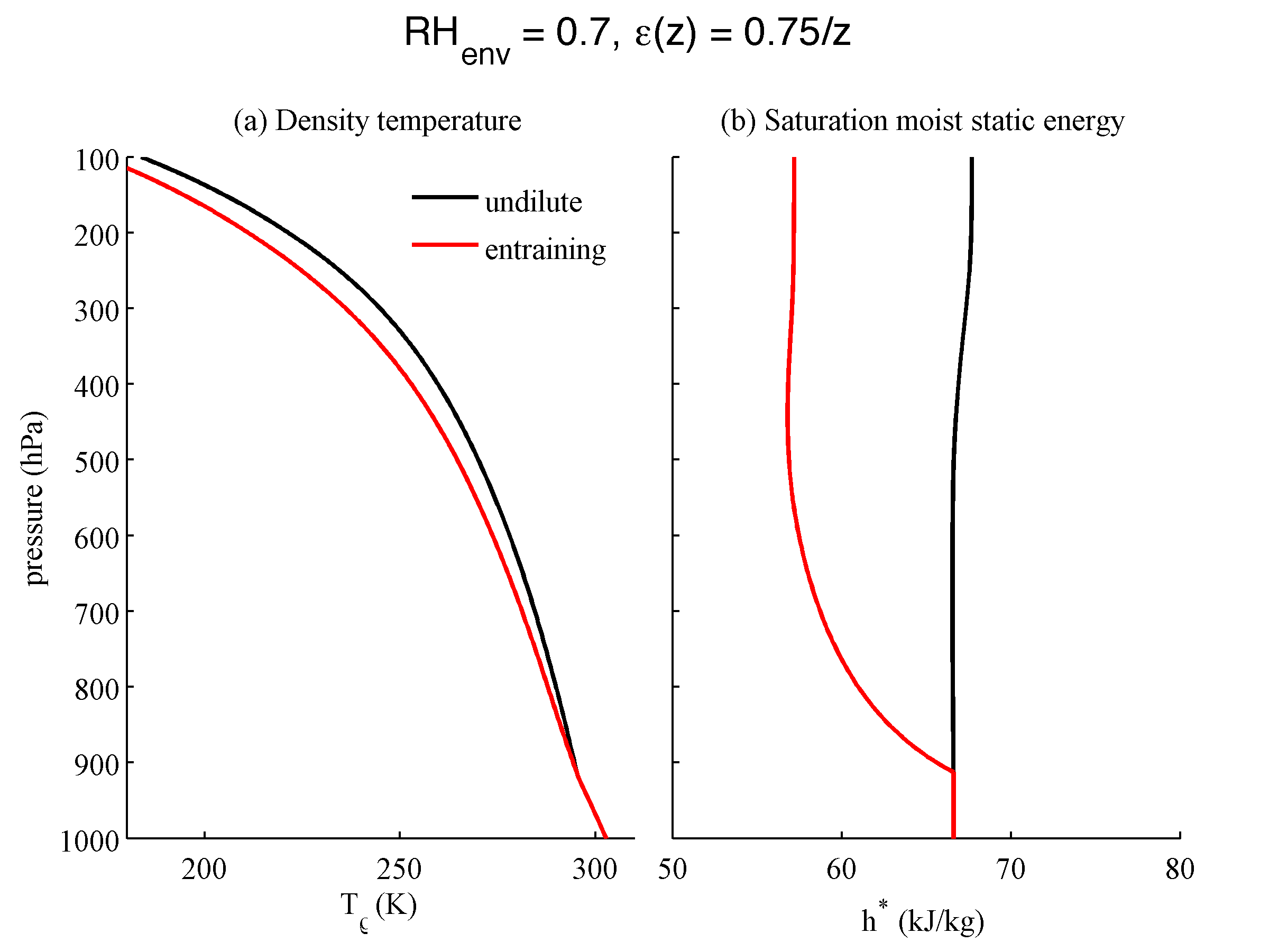Zero-buoyancy entraining plume model
Cloud system-resolving simulations show that typical cloud buoyancies are much smaller than would be implied by lifting a parcel from the boundary layer with no mixing. Hence it may be useful to think of the limit in which clouds are exactly neutrally buoyant with respect to their environment. In a recent paper, Paul O'Gorman and I introduced a simple model for thinking about the behavior of the thermal structure of a convecting atmosphere based on this idea. The model considers an ensemble of clouds to be an entraining plume which has the same density as its environment. Here I provide an implementation of this model as a MATLAB function. Given a surface temperature and humidity the model calculates the temperature profile of the plume and its environment based on a given entrainment rate and a given environmental humidity. This model has been used to explain the changes in CAPE seen in a cloud-system resolving model run in radiative-convective equilibrium as the surface temperature is varied.
 |